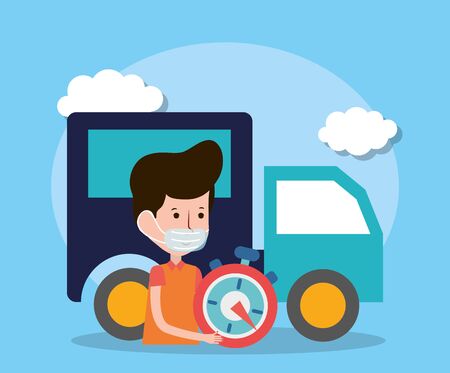Understanding the Law: Child Seat and Booster Requirements
When it comes to driving with children in the UK, understanding and complying with legal responsibilities is essential for every motorist. The UK has strict legislation in place regarding child car seats and booster usage, underpinned by safety considerations and enforced by the Highway Code. Current regulations specify that children must use a child car seat until they are either 12 years old or 135 centimetres tall—whichever comes first. After this point, they are required to wear a seat belt like adults. Child seats and boosters must meet approved British or European safety standards, denoted by labels such as ‘E’ or ‘BS’. Failure to use an appropriate restraint system can result in a fine of up to £500 and potential points on your licence. These rules are not merely recommendations; they reflect a legal obligation designed to protect young passengers. Moreover, parents and guardians should be aware that hiring or borrowing seats may not always comply with current safety standards, so due diligence is crucial. Understanding these requirements isn’t just about avoiding penalties; it’s about safeguarding your child’s wellbeing every time you take to UK roads.
2. Key Highway Code Rules for Driving with Children
When driving with children in the UK, it is crucial to adhere strictly to the Highway Code and specific legal requirements designed to ensure the safety of young passengers. The Highway Code outlines several rules that focus on child restraint systems, seating arrangements, and supervision within vehicles. Below is a detailed examination of these regulations:
Child Car Seats and Restraints
The Highway Code mandates that children must use the correct car seat or restraint until they reach either 135cm in height or their 12th birthday, whichever comes first. After this point, they are allowed to use an adult seatbelt. These laws apply to all private vehicles including cars, vans, and other passenger vehicles. Compliance is not just a matter of safety but also a legal obligation, with penalties imposed for non-compliance.
Summary of Child Seat Requirements
| Childs Age/Height | Required Restraint | Additional Notes |
|---|---|---|
| Under 3 years old | Correct child car seat | Must never travel in front seat without appropriate restraint |
| 3 years to 12 years (or under 135cm) | Correct child car seat or booster seat | If unavailable in taxis, may wear adult belt for short distances only; otherwise, appropriate seat required |
| Over 12 years (or over 135cm) | Adult seatbelt | Standard seatbelt laws apply as for adults |
Seating Position and Supervision
The placement of children in vehicles is also governed by specific guidance. While children can legally travel in either the front or rear seats, it is strongly recommended that they travel in the rear seats for maximum safety. If a rear-facing child seat is used in the front passenger seat, the airbag must be deactivated to prevent serious injury in the event of deployment.
Key Safety Recommendations:
- Rear Seat Preference: Children are safest when seated in the back.
- Airbag Deactivation: Always deactivate front airbags if placing a rear-facing child seat in the front.
- Supervision: Never leave children unattended in vehicles, even briefly.
- Buckle Up: Ensure every child is securely fastened before setting off on any journey.
Legal Implications of Non-Compliance
Failure to comply with these Highway Code rules can result in fines and penalty points on your licence. Moreover, insurers may refuse claims if injuries occur due to improper use of restraints. Adhering to these regulations not only fulfils legal responsibilities but also demonstrates best practice for safeguarding young passengers on UK roads.

3. Essential Safety Practices for Parents and Guardians
Ensuring the safety of children while driving is paramount, and there are several best practices that parents and guardians in the UK should adopt to comply with both legal requirements and Highway Code guidelines. The correct use of child restraints is not just a matter of compliance; it significantly reduces the risk of injury in the event of an accident.
Choosing Suitable Child Restraints
It is mandatory in the UK for children to use an appropriate car seat or booster until they are 12 years old or reach 135cm in height, whichever comes first. Selecting the right restraint depends on your childs age, weight, and height. Ensure the car seat meets British or European safety standards (look for the E mark label) and is correctly installed according to the manufacturer’s instructions.
Proper Seat Positioning
The safest place for children under 12 is typically in the rear seats, away from active airbags. Rear-facing seats offer optimal protection for younger children and infants. When using forward-facing seats or booster cushions, always ensure the seatbelt is correctly positioned across the shoulder and hips, not the neck or stomach, to maximise protection.
Recommendations for Long Journeys
For extended trips, plan regular breaks—ideally every two hours—to allow children to stretch and move around safely. Keep essential items such as snacks, water, and entertainment within easy reach but out of harm’s way. Double-check all restraints before setting off after each stop, as belts can become twisted or loosened over time.
Additional Safety Considerations
Always deactivate front passenger airbags when placing a rear-facing child seat in the front. Never leave children unattended in a parked vehicle. These small steps not only fulfil legal obligations but also create a culture of road safety that protects your most precious passengers at all times.
4. Recent Changes and Proposed Updates in Legislation
In recent years, the UK government has placed increased emphasis on improving child safety standards within vehicles, resulting in several amendments to legislation and the Highway Code. These changes reflect both evolving research on child passenger safety and a commitment to align with best practices across Europe. Below, we analyse the key updates and explore potential future reforms relevant to anyone driving with children in the UK.
Key Amendments in Child Car Seat Regulations
The most significant recent adjustment concerns the regulation of child car seats. In 2017, new laws were introduced regarding backless booster seats. Now, only children who are taller than 125cm and weigh more than 22kg can use backless boosters. This change aims to ensure smaller children receive adequate side-impact protection in the event of a collision.
| Year | Legislative Change | Main Impact |
|---|---|---|
| 2017 | Backless booster seat restrictions introduced | Improved safety for smaller children; stricter usage guidelines for manufacturers and parents |
| 2022 | Consultation on updating seat belt laws launched | Potential requirement for all passengers under 18 to wear seat belts at all times, regardless of seating position |
Proposed Changes Under Review
The Department for Transport (DfT) has been actively consulting on further measures to enhance child passenger safety. Among these are proposals to:
- Mandate clearer labelling of child restraint systems sold in the UK market, making it easier for parents to select age-appropriate equipment.
- Tighten enforcement around non-compliance, with suggestions for higher fines or points on licences if drivers fail to secure children correctly.
- Introduce requirements for regular checks of school transport vehicles to verify correct child seat usage.
Impact on Drivers and Families
These legislative trends underscore an ongoing shift towards greater accountability for those transporting children. For families, keeping up-to-date with legal requirements is essential—not only to avoid penalties but also to ensure maximum protection for young passengers.
Staying Informed: What’s Next?
The government is expected to publish outcomes from current consultations later this year, which may result in further updates to the Highway Code or even primary legislation. Motorists are advised to regularly check official resources such as GOV.UK or the RAC Foundation for the latest guidance.
5. Cultural Considerations: British Attitudes and Common Mistakes
When it comes to driving with children in the UK, cultural attitudes play a significant role in shaping behaviours on the road. Many British drivers pride themselves on courtesy and adherence to rules, yet common misconceptions persist that can inadvertently compromise child safety. For instance, some believe short journeys do not require full car seat compliance, or that holding a child in one’s arms is acceptable if travelling locally. These myths stem from outdated practices and a lack of awareness regarding current Highway Code requirements.
Typical British Perspectives
The majority of UK motorists understand the importance of car seats and seat belts, recognising that the law exists to protect young passengers. There is also a strong public expectation for parents and guardians to model responsible behaviour behind the wheel. However, research reveals that many families underestimate risks associated with low-speed collisions or assume that local trips are less hazardous than motorway travel.
Common Misconceptions
It is not uncommon for drivers to misinterpret age and height guidelines for child restraints, leading to premature transitions from booster seats to adult seat belts. Others may overlook correct installation of car seats, mistakenly trusting that simply owning a compliant device suffices. Additionally, some parents are unaware of the illegality of placing rear-facing seats in front passenger positions equipped with active airbags.
Fostering a Culture of Road Safety
Promoting a robust culture of road safety involves both education and reinforcement of best practices. Parents should familiarise themselves with up-to-date government guidance and invest time in proper car seat installation—many local authorities offer free fitting clinics. Open conversations about road safety within families help instil lifelong habits among children. Ultimately, embracing an informed, proactive approach ensures British roads remain safe spaces for all young travellers.
6. Resources and Guidance for UK Parents
For parents seeking reliable information and support when it comes to driving with children in the UK, several authoritative resources and organisations offer guidance on legal responsibilities, Highway Code requirements, and best practices. Below is a curated list of reputable sources to help you navigate your obligations and keep your family safe on the road.
Government Guidance
- GOV.UK: The official government website provides comprehensive advice on car seat laws, booster seat regulations, and carrying children safely. Visit GOV.UK: Child Car Seats: The Rules for up-to-date legislation.
- The Highway Code: Accessible online, this essential resource outlines all legal requirements and recommended conduct for motorists, including detailed guidance on transporting children. Find the latest version at The Highway Code.
Organisations Offering Advice & Support
- Royal Society for the Prevention of Accidents (RoSPA): RoSPA offers practical safety tips for families and educational resources about in-car child safety. Explore their advice at rospa.com.
- Child Accident Prevention Trust (CAPT): CAPT provides advice for parents on preventing injuries, including guidance on safe travel with children. See their resources at capt.org.uk.
- BABYSAFE UK: This organisation specialises in car seat safety checks and education for parents. For expert fitting advice or local workshops, visit babysafeuk.co.uk.
Local Authorities & Police Forces
Your local council and police force websites often provide region-specific guidance on road safety campaigns and events, as well as information about free car seat clinics or inspections in your area.
Quick Tips for Staying Informed
- Sign up for email updates from GOV.UK to stay abreast of changes to child passenger laws.
- Engage with local parenting groups or forums for peer advice and shared experiences regarding car safety practices.
Conclusion
Staying informed through trusted resources is key to fulfilling your legal responsibilities when driving with children in the UK. By consulting these organisations and regularly checking official guidance, you can ensure compliance with the law and prioritise your family’s wellbeing every time you take to the road.

